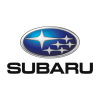
Subaru Outback

Model Overview
Every mid-size crossover on the market owes its existence to the Subaru Outback, the vehicle that proved there was an appetite for a car with SUV-like qualities. More recent Outback designs are spacious and comfortable to drive and offer great visibility. Subaru makes a pretty good AWD system, too, which works well with generous ground clearance. A 2020 redesign made the Outback larger and added useful tech and more power.
Photos

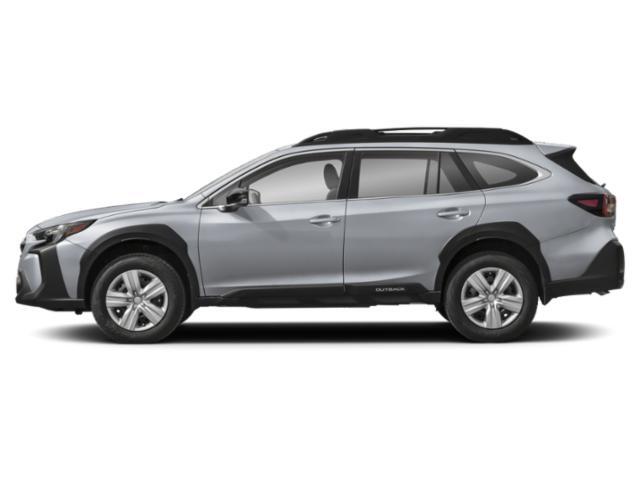
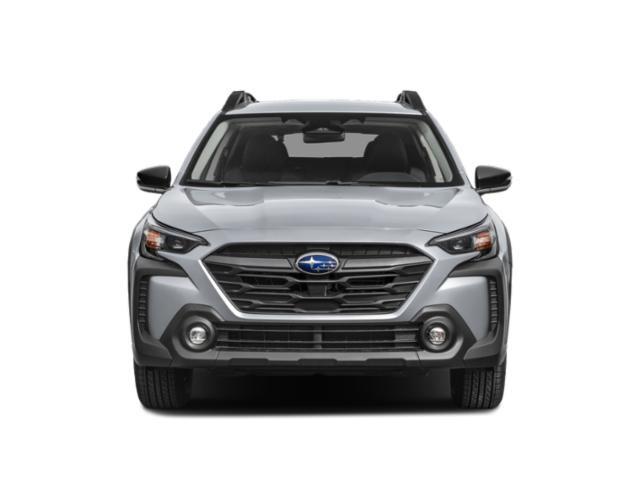
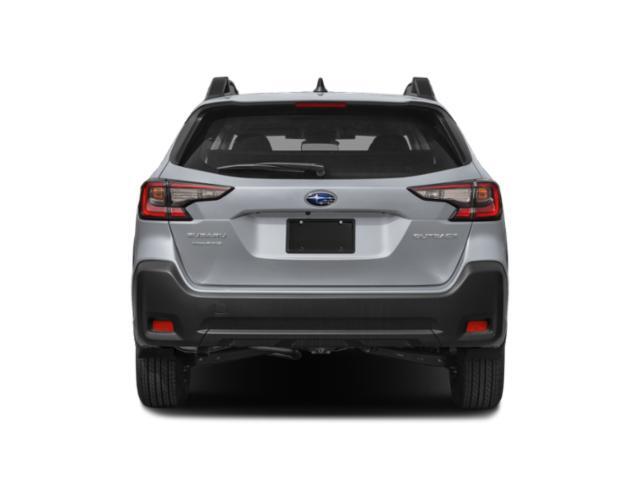
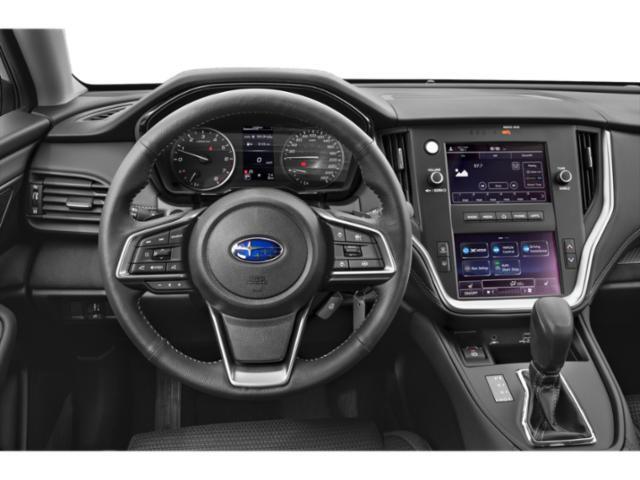

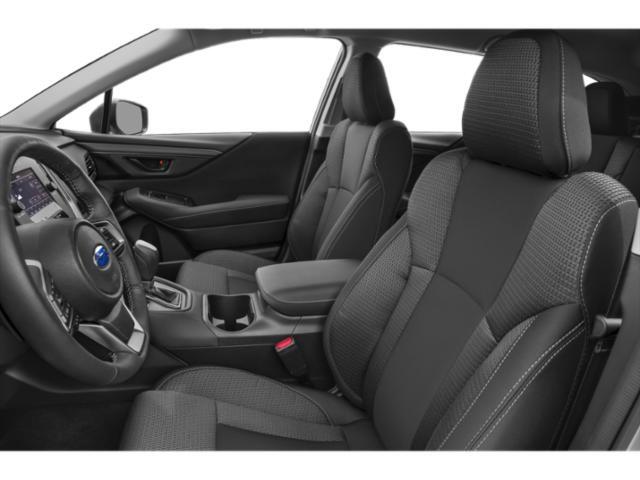

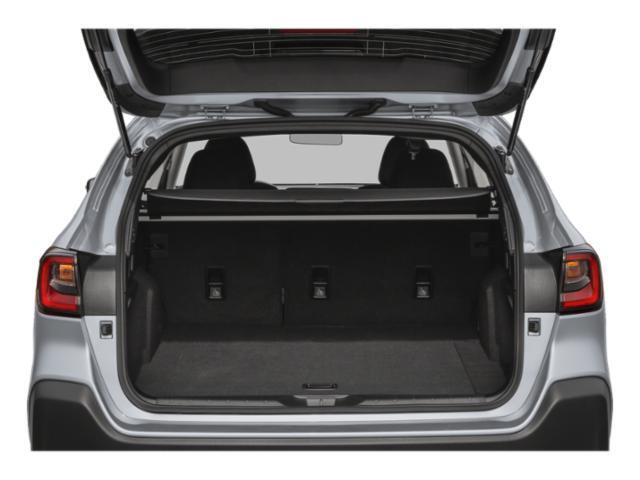
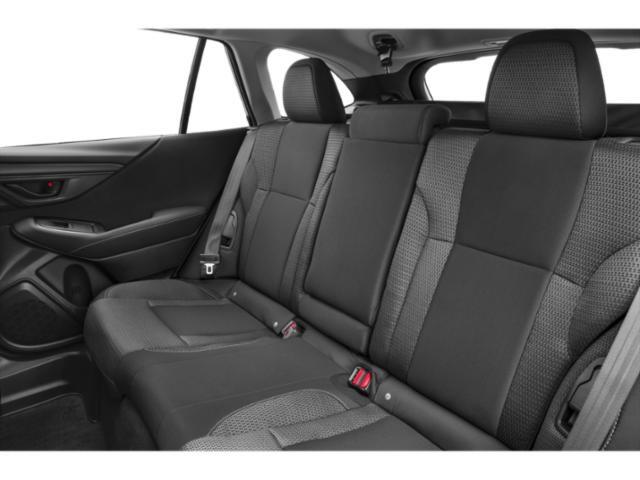
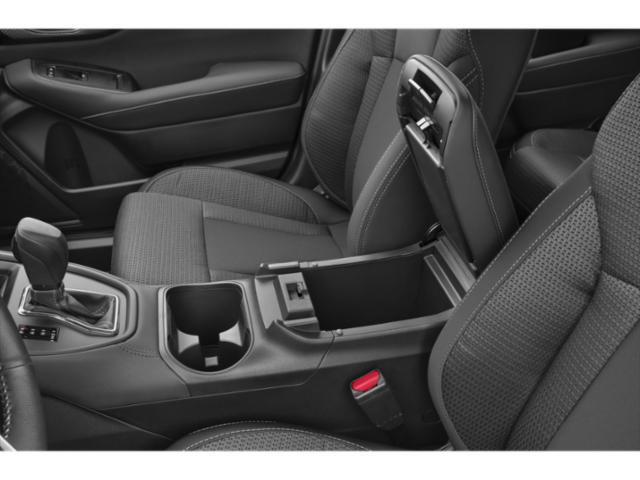
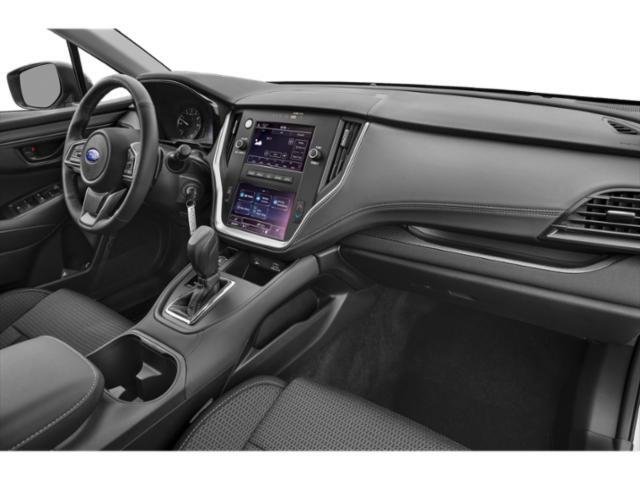

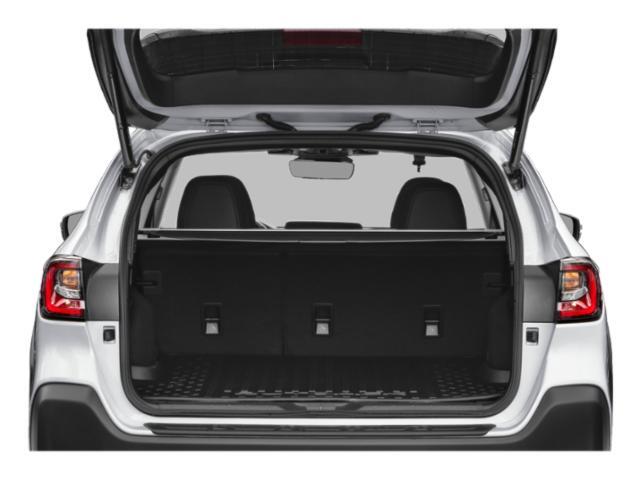
















Reviews and News
Owner Scores
Comfort
N/A
Performance
N/A
Fuel Economy
N/A
Interior Design
N/A
Exterior Styling
N/A
Reliability
N/A
Owner Reviews
tig-ger
Best 4X4 I've ever had
March 16, 2021
2.5 Limited
Overall Score
Bought used 2 years old. General maintenance done. 3 wheel bearings replaced and normal brake repairs. Wouldn't buy anything else to replace it. 150000kms
Comfort
8
Performance
8
Fuel Economy
10
Interior Design
10
Exterior Styling
8
Reliability
10
Recall Information
* Data provided by Transport Canada
Recall number
Recall date
System affected
Model year(s) affected
Recall number
2023-607
Recall date
2023-11-09
System affected
Electrical
Model year(s) affected
2021 2022 2023
Manufacturer Recall Number:
WRQ-23
Units Affected:
12,839
Notification Type:
Safety Mfr
Issue:
On certain vehicles, water could enter the inhibitor switch and cause it to fail. If this happens, the backup lamps may not turn on and the rearview camera image may not display when backing up. This could also cause the gear selection indicator in the instrument panel not to be displayed.
Safety Risk:
Backup lamps that don't work could cause others not to recognize when a vehicle is backing up. A rearview camera image that doesn't display could reduce a driver's ability to see behind the vehicle while backing up. These issues could increase the risk of a crash.
Corrective Actions:
Subaru will notify owners by mail and advise you to take your vehicle to a dealership to replace the inhibitor switch.
Recall number
2023-521
Recall date
2023-09-21
System affected
Powertrain
Model year(s) affected
2023
Manufacturer Recall Number:
WRN-23
Units Affected:
202
Notification Type:
Safety Mfr
Issue:
On certain vehicles, the bolts that attach the driveshaft center support brace could loosen. If this happens, the front end of the driveshaft could separate.
Safety Risk:
A driveshaft that separates could increase the risk of a crash.
Corrective Actions:
Subaru will notify owners by mail and advise you to take your vehicle to a dealership to clean the bolt mounting surfaces for the driveshaft center support brace and install new bolts.
Recall number
2022-395
Recall date
2022-07-21
System affected
Brakes
Model year(s) affected
2015 2016 2017
Manufacturer Recall Number:
WRZ-22
Units Affected:
1,793
Notification Type:
Safety Mfr
Issue:
On certain vehicles equipped with a manual transmission, a connector for the electronic parking brake (EPB) could disconnect. If this happens, you won't be able to apply the parking brake and the vehicle could roll away. If this happens and the parking brake is set, you won't be able release it.
Note: This problem will cause the brake warning lamp to turn on or flash.
Safety Risk:
A parked vehicle that moves unexpectedly could increase the risk of an injury or a crash.
Corrective Actions:
Subaru will notify owners by mail and instruct you to take your vehicle to a dealership to inspect the adapter cord connector for the electronic parking brake, and if necessary, install an additional retaining clip. To reduce the safety risk, Subaru recommends that you should park the vehicle in a flat location and leave the transmission in gear whenever possible until the recall repairs have been completed. Additionally, when parking uphill, the front wheels should be turned away from the curb and the shift lever should be placed into first gear. When parking downhill, the front wheels should be turned into the curb and the shift lever should be placed into reverse gear.
Recall number
2021-745
Recall date
2021-12-10
System affected
Powertrain
Model year(s) affected
2020
Manufacturer Recall Number:
WRK-21
Units Affected:
13,078
Notification Type:
Safety Mfr
Issue:
On certain vehicles, a software problem in the transmission control unit (TCU) may cause the drive chain to slip or break. If this happens while the vehicle is in motion, there could be a loss of power to the wheels.
Safety Risk:
A loss of power to the wheels could increase the risk of a crash.
Corrective Actions:
Subaru will notify owners by mail and instruct you to take your vehicle to a dealer to inspect the transmission chain guide and update the TCU. If necessary, the transmission assembly will be replaced.
Recall number
2021-466
Recall date
2021-07-29
System affected
Fuel Supply
Model year(s) affected
2018 2019 2020
Manufacturer Recall Number:
WRG-21
Units Affected:
12,601
Notification Type:
Safety Mfr
Issue:
On certain vehicles, the low-pressure fuel pump could fail. If this happens, then engine may run rough or may not start and the check engine light may turn on. This could also result in a sudden loss of engine power while driving.
Safety Risk:
A sudden loss of engine power could increase the risk of a crash.
Corrective Actions:
Subaru will notify owners by mail and instruct you to take your vehicle to a dealer to replace the fuel pump.
Recall number
2020-001
Recall date
2020-01-02
System affected
Airbag
Model year(s) affected
2003 2004 2005 2006 2007 2008 2009 2010 2011 2012 2013 2014
Manufacturer Recall Number:
TKC-20
Units Affected:
23,159
Notification Type:
Safety Mfr
Issue:
This recall is for certain vehicles that had an airbag inflator replaced as a part of an earlier recall campaign. This recall provides a final repair.
Long-term exposure to high absolute humidity and temperature, combined with high temperature cycling, may eventually degrade the propellant contained in the passenger-front airbag. This could cause the airbag to deploy with more force than normal. If the airbag inflator ruptures, fragments could be propelled toward vehicle occupants or cause damage to the airbag assembly, preventing its proper function.
Safety Risk:
If the vehicle is involved in a crash requiring an airbag deployment, the airbag inflator could rupture and create a risk of injury.
Corrective Actions:
Owners will be notified by mail and instructed to take their vehicle to a dealer to inspect the passenger-front airbag inflator. The passenger-front airbag module or inflator will be replaced as necessary. Note: The Canadian climate results in the propellant degrading slowly. This recall is being conducted as a precaution to address future risk. It is expected that all airbag inflators will be replaced before their function would be affected.
Recall number
2019-191
Recall date
2019-04-18
System affected
Electrical
Model year(s) affected
2004 2005 2006 2007 2008 2009 2010 2011 2012 2013 2014
Manufacturer Recall Number:
WUF-91
Units Affected:
100
Notification Type:
Service Campaign Mfr
Issue:
A problem with certain replacement ignition switches may allow the key turn out of the “ON” position while driving. This could cause the engine to turn off suddenly. It could also cause the airbag system not to work properly in a crash.
Note: This is a voluntary service campaign that is not being conducted under the requirements of the Motor Vehicle Safety Act. This problem only affects certain parts used for replacement of original parts.
Safety Risk:
A sudden loss of engine power could increase the risk of a crash. An airbag system that does not work properly in a crash could cause an increased risk of injuries.
Corrective Actions:
The company will notify owners by mail and instruct them to take their vehicle to a dealer to inspect the ignition switch, and replace it as necessary.
Recall number
2019-013
Recall date
2019-01-10
System affected
Airbag
Model year(s) affected
2010 2011 2012 2013 2014
Manufacturer Recall Number:
TKC-19
Units Affected:
102,110
Notification Type:
Safety Mfr
Issue:
On certain vehicles, long-term exposure to high absolute humidity and temperature, combined with high temperature cycling, may eventually degrade the propellant contained in the passenger-front airbag. This could cause the airbag to deploy with more force than normal. If the airbag inflator ruptures, fragments could be propelled toward vehicle occupants or cause damage to the airbag assembly, preventing its proper function.
Safety Risk:
If the vehicle is involved in a crash requiring an airbag deployment, the airbag inflator could rupture and create a risk of injury.
Corrective Action:
Owners will be notified by mail and instructed to take their vehicle to a dealer to have the passenger-front airbag inflator replaced.
Note: The Canadian climate results in the propellant degrading slowly. This recall is being conducted as a precaution to address future risk. It is expected that all airbag inflators will be replaced before their function would be affected.
Recall number
2018-502
Recall date
2018-09-14
System affected
Brakes
Model year(s) affected
2010 2011 2012 2013 2014
Manufacturer Recall Number:
WTV-81
Units Affected:
3,486
Notification Type:
Safety Mfr
On certain vehicles equipped with manual transmissions, components within the control unit for the electronic parking brake (EPB) may crack with vehicle use over time. If this were to occur, the brake warning lamp would illuminate and the EPB may not apply as intended. This could result in the unintended movement of a parked vehicle, increasing the risk of crash causing injury and/or damage to property. Correction: Dealers will replace the Parking Brake Actuator with a more durable one.
Recall number
2018-019
Recall date
2018-01-10
System affected
Airbag
Model year(s) affected
2009
Manufacturer Recall Number:
TKC-18
Units Affected:
20,453
Notification Type:
Safety Mfr
On certain vehicles, long-term exposure to high absolute humidity and temperature, combined with high temperature cycling, could eventually degrade the propellant contained in the passenger frontal airbag. This could cause the airbag to deploy with more force than normal. As a result, if the vehicle were involved in a collision that warrants airbag deployment, fragments could be propelled toward vehicle occupants, and the airbag assembly could be damaged, preventing proper function. These issues could increase the risk of injury. Correction: Dealers will replace the passenger frontal airbag inflator. Note: Canadian climate results in the propellant degrading slowly. The recall is being conducted as a precaution to address future risk, and is expected to replace airbag inflators before their function would be affected.
Recall number
2016-492
Recall date
2016-10-07
System affected
Electrical
Model year(s) affected
2007 2008 2009
Manufacturer Recall Number:
WTM-73
Units Affected:
15,378
Notification Type:
Safety Mfr
On certain turbocharged vehicles, the relay which controls the secondary air injection pump may have been manufactured incorrectly. As a result, the relay may allow the pump to operate continuously. If this condition were to occur, the pump may overheat and melt, causing burning smell or smoke and possibly resulting in a fire. This could increase the risk of injury and/or damage to property. Correction: Dealers will install a revised relay.
Recall number
2016-487
Recall date
2016-10-06
System affected
Structure
Model year(s) affected
2017
Manufacturer Recall Number:
WTL-72
Units Affected:
79
Notification Type:
Safety Mfr
On certain vehicles, the driver’s knee guard bracket may not have been properly aligned at the time of welding and may not have been properly attached to the steering beam. In a frontal crash where the driver is not wearing a seatbelt, the knee guard may not be able to restrain the occupant’s lower body as designed, which could increase the risk of injury to the driver. Correction: Knee guard welds will be inspected and repaired as necessary. Note: All vehicles are to be inspected and/or repaired prior to sale.
Recall number
2016-471
Recall date
2016-09-26
System affected
Visual System
Model year(s) affected
2010 2011 2012 2013
Manufacturer Recall Number:
WTK-71
Units Affected:
38,629
Notification Type:
Safety Mfr
On certain vehicles, a manufacturing defect could cause the windshield wipers to become inoperable. If an obstruction (such as snow or ice in the cowl area of the windshield) prevents the wipers from returning to the “park” position when wipers are turned off, the wiper arms would be forced to "park" at a higher than intended position on the windshield. The wiper arms will continuously attempt to return to the normal park position, generating an excessive amount of electrical current in the wiper motor bottom cover, possibly resulting in overheating. This could result in the windshield wipers becoming inoperable, or a possible fire in the bottom cover area of the wiper motor. These issues could impair the driver’s visibility and increase the risk of a crash causing injury and/or damage to property. Correction: Dealers will replace the front wiper motor bottom cover assembly with a countermeasure one.
Recall number
2016-257
Recall date
2016-05-25
System affected
Airbag
Model year(s) affected
2003 2004
Manufacturer Recall Number:
TKC-16
Units Affected:
10,837
Notification Type:
Safety Mfr
On certain vehicles, long-term exposure to high absolute humidity and temperature, combined with high temperature cycling, could eventually degrade the propellant contained in the passenger frontal airbag. This could cause the airbag to deploy with more force than normal. As a result, if the vehicle were involved in a collision that warrants airbag deployment, fragments could be propelled toward vehicle occupants, and the airbag assembly could be damaged, preventing proper function. These issues could increase the risk of injury. Correction: Dealers will inspect, and replace the passenger frontal airbag inflator as necessary. Note: Canadian climate results in the propellant degrading slowly. The recall is being conducted as a precaution to address future risk, and is expected to replace airbag inflators before their function would be affected.
Recall number
2016-207
Recall date
2016-05-11
System affected
Steering
Model year(s) affected
2016
Manufacturer Recall Number:
WTD-65
Units Affected:
3,494
Notification Type:
Safety Mfr
On certain vehicles, steering column components may not have been manufactured to specification and therefore may not engage correctly, which could result in a loss of steering control and increasing the risk of a crash causing injury and/or damage to property. Correction: Dealers will inspect, and if necessary, replace the steering column. Note: In the interim, owners are advised to not drive their vehicle until an inspection of the steering column has been completed.
Recall number
2015-599
Recall date
2015-12-18
System affected
Airbag
Model year(s) affected
2005 2006 2007 2008
Manufacturer Recall Number:
WQR-53e
Units Affected:
22,864
Notification Type:
Safety Mfr
On certain vehicles, the passenger frontal airbag inflator could produce excessive internal pressure during airbag deployment. Increased pressure may cause the inflator to rupture, which could allow fragments to be propelled toward vehicle occupants, increasing the risk of injury. This could also damage the airbag module, which could prevent proper deployment. Failure of the passenger airbag to fully deploy during a crash (where deployment is warranted) could increase the risk of personal injury to the seat occupant. Correction: Dealers will replace airbag inflators. Note: This is an expansion of recall 2015-234.
Recall number
2015-555
Recall date
2015-11-23
System affected
Powertrain
Model year(s) affected
2016
Manufacturer Recall Number:
WQV-57
Units Affected:
185
Notification Type:
Safety Mfr
On certain vehicles, the nuts securing the propeller shaft to the rear differential may have not been tightened to specification during assembly and could loosen over time. This could cause the propeller shaft to come loose from the rear differential, which would result in excessive noise and may contact and eventually damage the fuel tank, which may result in a fuel leak. Fuel leakage, in the presence of an ignition source, could result in a fire causing injury and/or property damage. Correction: Dealers will inspect the nuts fastening the propeller shaft to the rear differential and tighten or replace the nuts and bolts as necessary.
Recall number
2015-358
Recall date
2015-08-06
System affected
Powertrain
Model year(s) affected
2016
Manufacturer Recall Number:
WQU-56
Units Affected:
10
Notification Type:
Safety Mfr
On certain vehicles, during the manufacturing process of pressing the seal cap onto the propeller shaft yoke, the seal cap may have been positioned incorrectly. This could result in the seal leaking transmission oil onto hot exhaust components, increasing the risk of fire resulting in injury and/or damage to property. Correction: Dealers will replace the propeller shaft assembly.
Recall number
2015-249
Recall date
2015-06-04
System affected
Accessories
Model year(s) affected
2015
Manufacturer Recall Number:
WQS-54
Units Affected:
4,587
Notification Type:
Safety Mfr
On certain vehicles, if the driver assist system were to become disabled due to a brake light switch failure, the system could fail to inform the driver that the automatic braking, adaptive cruise control and pre-collision braking systems are disabled. This could increase the risk of a crash causing injury and/or damage to property. Correction: Dealers will reprogram the driver assist system.
Recall number
2015-206
Recall date
2015-05-15
System affected
Accessories
Model year(s) affected
2013 2014 2015
Manufacturer Recall Number:
WQO-51
Units Affected:
3,500
Notification Type:
Compliance Mfr
On certain vehicles equipped with EyeSight driver assist technology, the French version of the EyeSight Owner’s Manual my contain incorrect translations of certain text. If the vehicle were to be operated as described in the mistranslated French text, it could increase the risk of a crash. Correction: Subaru will send corrected French EyeSight manuals directly to affected vehicle owners and additional corrected manuals will be available to all Dealers.
Recall number
2014-413
Recall date
2014-09-22
System affected
Accessories
Model year(s) affected
2015
Manufacturer Recall Number:
WQN-50
Units Affected:
1
Notification Type:
Safety Mfr
On certain vehicles equipped with a dealer-installed trailer hitch, hitch mounting hardware may have been overtightened at time of assembly. This could reduce the strength of the fasteners, potentially causing the trailer hitch to detach from the vehicle while a trailer is being towed. This could increase the risk of a crash causing injury and/or damage to property. Correction: Dealers will inspect the mounting hardware and replace as necessary.
Recall number
2014-285
Recall date
2014-07-04
System affected
Airbag
Model year(s) affected
2003 2004
Manufacturer Recall Number:
WQL-48
Units Affected:
1,112
Notification Type:
Safety Mfr
On certain vehicles, the passenger (frontal) airbag inflator could produce excessive internal pressure during airbag deployment. Increased pressure may cause the inflator to rupture, which could allow fragments to be propelled toward vehicle occupants, increasing the risk of injury. This could also damage the airbag module, which could prevent proper deployment. Failure of the airbag to fully deploy during a crash (where deployment is warranted) could increase the risk of personal injury to the seat occupant. Correction: Dealers will replace the passenger airbag inflator.
Recall number
2014-223
Recall date
2014-06-12
System affected
Brakes
Model year(s) affected
2005 2006 2007 2008 2009
Manufacturer Recall Number:
WQK-47
Units Affected:
105,649
Notification Type:
Safety Mfr
On certain vehicles, the center and rear brake lines may become perforated due to corrosion. This would cause a leak in the brake system potentially increasing stopping distances, which could increase the risk of a crash causing injury and/or damage to property. Correction: Dealers will inspect vehicles and either apply an anti-corrosion coating to the lines, or replace them as necessary. Note: This recall supersedes recall 2013092. Vehicles that were inspected and/or repaired under the previous recall will require re-inspection and/or repair.
Recall number
2013-262
Recall date
2013-08-02
System affected
Powertrain
Model year(s) affected
2014
Manufacturer Recall Number:
WQJ-46
Units Affected:
31
Notification Type:
Safety Mfr
On certain vehicles equipped with automatic transmissions, a defect in the PARK function could allow the vehicle to roll away while in PARK, or to immobilize the vehicle so that is cannot be moved or driven. Should the vehicle roll away, it could strike another vehicle, stationary object, or a bystander, causing property damage and/or personal injury. Correction: Dealers will replace the transmission.
Recall number
2013-162
Recall date
2013-05-13
System affected
Steering
Model year(s) affected
2013
Manufacturer Recall Number:
WQI-45
Units Affected:
401
Notification Type:
Safety Mfr
On certain vehicles, the steering column may have been assembled incorrectly and could fail. If this occurs, the driver may suddenly lose the ability to steer the vehicle, which could result in a crash causing property damage and/or personal injury. Correction: Dealers will replace the steering column assembly.
Recall number
2013-092
Recall date
2013-03-26
System affected
Brakes
Model year(s) affected
2005 2006 2007 2008 2009
Manufacturer Recall Number:
WQG-43
Units Affected:
25,732
Notification Type:
Superseded
On certain vehicles, due to the design of the fuel tank protector, the center and rear brake lines may become perforated due to corrosion. This would cause a leak in the brake system potentially increasing stopping distances, which could increase the risk of a crash causing injury and/or damage to property. Correction: Dealers will inspect vehicles and either apply an anti-corrosion coating to the lines, or replace them as necessary. Note: This recall is superseded by recall 2014223.
Recall number
2013-063
Recall date
2013-02-25
System affected
Accessories
Model year(s) affected
2010 2011 2012 2013
Manufacturer Recall Number:
WQF-42
Units Affected:
2,813
Notification Type:
Safety Mfr
On certain vehicles equipped with a dealer-installed accessory remote engine starter, if the fob is dropped, movement of the internal battery retaining clip may occur and cause damage to a component on the printed circuit board. Under this condition, the fob may transmit an engine start (or stop) request without the user pressing the button. If the vehicle is in range and receives the request, the engine may start and run for up to 15 minutes (or until a stop request is received). The engine may continue to start and stop until the fob battery is depleted, or until the vehicle runs out of fuel. If that occurs when the vehicle is parked in an enclosed area, such as a garage, there is a risk of carbon monoxide build-up, which could result in asphyxiation or carbon monoxide poisoning. Correction: Dealers will replace the remote engine starter fob.
Recall number
2012-444
Recall date
2012-12-27
System affected
Accessories
Model year(s) affected
2010 2011
Manufacturer Recall Number:
WQE-41
Units Affected:
293
Notification Type:
Safety Mfr
On certain vehicles equipped with dealer-installed accessory puddle lights, a short circuit may develop causing the lights to melt and/or emit smoke. This could result in a fire causing property damage and/or injury. Correction: Dealers will install an additional fused wiring harness to protect against short circuits.
Recall number
2012-048
Recall date
2012-02-09
System affected
Airbag
Model year(s) affected
2012
Manufacturer Recall Number:
WVZ-36
Units Affected:
6
Notification Type:
Safety Mfr
On certain vehicles, the side curtain airbag inflators may have been incorrectly manufactured and, as a result, one or both airbags may not deploy as intended. Failure of a side curtain airbag to deploy during a crash (where deployment is warranted), could increase the risk of personal injury to the seat occupant. Correction: Dealers will inspect and, if necessary, replace one or both side curtain airbag assemblies.
Recall number
2011-414
Recall date
2011-11-29
System affected
Brakes
Model year(s) affected
2012
Manufacturer Recall Number:
WVY-35
Units Affected:
4,145
Notification Type:
Safety Mfr
On certain vehicles, a seal within the brake master cylinder may have deformed during vehicle assembly. As such, the driver may experience extended brake pedal travel and increased stopping distance, which could result in a crash causing property damage and/or personal injury. Correction: Dealers will inspect and, if necessary, replace the brake master cylinder assembly.
Recall number
2011-343
Recall date
2011-09-19
System affected
Accessories
Model year(s) affected
2011
Manufacturer Recall Number:
WvW-33
Units Affected:
5,220
Notification Type:
Safety Mfr
On certain vehicles, the moonroof glass may not have been correctly installed during vehicle assembly. A moonroof glass separating from the vehicle could strike another vehicle, stationary object, or bystander, causing property damage and/or personal injury. Correction: Dealers will inspect the glass adhesion and either apply additional adhesive or replace the moonroof glass.
Recall number
2011-342
Recall date
2011-09-19
System affected
Electrical
Model year(s) affected
2010 2011
Manufacturer Recall Number:
WVV-32
Units Affected:
15,202
Notification Type:
Safety Mfr
On certain vehicles, the windshield wiper motor could overheat and fail. Overheating could cause the bottom cover to melt, which may result in a vehicle fire causing property damage and/or personal injury. Loss of windshield wiping capability, should it occur during a rainy/snowy day, may compromise the driver's ability to see the road and its users, which could result in a crash. Correction: Dealers will replace the windshield wiper motor bottom cover assembly.
Recall number
2010-233
Recall date
2010-07-16
System affected
Powertrain
Model year(s) affected
2010 2011
Manufacturer Recall Number:
WVS-29
Units Affected:
102
Notification Type:
Safety Mfr
On certain vehicles, a lubrication hole within the 6-speed manual transmission transfer case was not drilled during machining process. This could lead to premature wear or breakage of third gear. If the third gear breaks while the vehicle is in motion a loss of power to the drive wheels will occur, which may result in a vehicle crash. Correction: Dealers will drill an oil lubrication hole in the transfer case and, if necessary, replace internal components.
Recall number
2010-205
Recall date
2010-06-23
System affected
Electrical
Model year(s) affected
2010
Manufacturer Recall Number:
WVR-28
Units Affected:
5,534
Notification Type:
Safety Mfr
On certain vehicles, an electrical connection in the steering column roll connector may fail. As a result certain electrical components may not operate as intended. Possible circuits affected are the driver's frontal airbag, paddle shifter function, cruise control, horn, and radio functions. Failure of the driver's frontal airbag to deploy during a crash (where deployment is warranted) could increase the risk of personal injuries to the seat occupant. Correction: Dealers will inspect and, if necessary, replace the roll connector with an updated version.
Recall number
2010-156
Recall date
2010-05-12
System affected
Powertrain
Model year(s) affected
2010
Manufacturer Recall Number:
WVQ-27
Units Affected:
1,588
Notification Type:
Safety Mfr
On certain vehicles, a crack can occur in the Continuously Variable Transmission (CVT) cooler hose, resulting in a transmission fluid leakage and illumination of the Malfunction Indicator Lamp (MIL). A transmission fluid leak, in the presence of an ignition source, could result in an engine compartment fire causing property damage or personal injury. Correction: Dealers will inspect and, if necessary, replace the cooler hose.
Recall number
2004-094
Recall date
2004-03-16
System affected
Other
Model year(s) affected
2001 2002 2003 2004
Manufacturer Recall Number:
WWQ-01
Units Affected:
8,953
Notification Type:
Safety Mfr
On certain Legacy, Outback H-6 3.0L and Impreza WRX 2.0L Turbo, the cruise control cable could come out of its track on the cruise control lever and lodge on the control lever tab when the accelerator pedal is released. If this condition occurs, the throttle will not return to the idle position which may cause the driver to lose control of the vehicle. Correction: Dealer will install a retaining clip to the cruise control lever tab.
Recall number
2003-198
Recall date
2003-08-27
System affected
Fuel Supply
Model year(s) affected
2004
Manufacturer Recall Number:
WWO-98
Units Affected:
811
Notification Type:
Safety Mfr
Certain vehicles may have a loose or out of position fuel filler hose clamp which could result in fuel leakage. Correction: Dealer will inspect and tighten the clamp on the fuel filler hose.
Recall number
2003-167
Recall date
2003-07-07
System affected
Suspension
Model year(s) affected
2003
Manufacturer Recall Number:
WWN-97
Units Affected:
217
Notification Type:
Safety Mfr
On certain vehicles, the left front transverse link components were produced with poor electro-deposition coating quality which, after continued exposure to corrosive road salts for a period of several years, may result in rust-out of the component and possible breakage of the transverse link. If such a breakage occurs while the vehicle is being operated, control of the vehicle could be affected. Correction: Dealer will rust-proof the left side transverse link with anti-rust wax.
Recall number
2003-117
Recall date
2003-04-30
System affected
Suspension
Model year(s) affected
2000 2001 2002 2003
Manufacturer Recall Number:
WWM-96
Units Affected:
12,450
Notification Type:
Safety Mfr
On certain vehicles operated in the "salt-belt" provinces of Manitoba, Ontario, Québec, New Brunswick, Nova Scotia, Prince Edward Island and Newfoundland & Labrador. The rear suspension subframe components were produced with poor paint quality which, after continued exposure to corrosive road salts for a period of several years, may result in rust-out of the component and possible breakage of the subframe. Correction: Dealer will clean and rust-proof with anti-rust oil and anti-rust wax.
Recall number
2002-200
Recall date
2002-11-05
System affected
Powertrain
Model year(s) affected
2002 2003
Manufacturer Recall Number:
WWK-94
Units Affected:
11,597
Notification Type:
Safety Mfr
On certain vehicles equipped with automatic transmissions, the parking pawl actuating rod ("parking rod") spring retainer may be defective. The parking pawl may not engage the parking gear fully and could cause the vehicle to move if the parking brake is not applied. Correction: Dealers will replace the automatic transmission parking rod assembly. Replacement parts will not be available until January 2003.
Recall number
2002-162
Recall date
2002-09-11
System affected
Engine
Model year(s) affected
2003
Manufacturer Recall Number:
CAA-58
Units Affected:
153
Notification Type:
Safety Mfr
On certain 4-cylinder vehicles, the water pump pulley center hole was improperly machined and the pulley may dislodge from the pump which could result in severe engine damage during vehicle usage. Correction: The originally equipped water pump of each of the potentially affected vehicles will be replaced.
Select Another Vehicle










